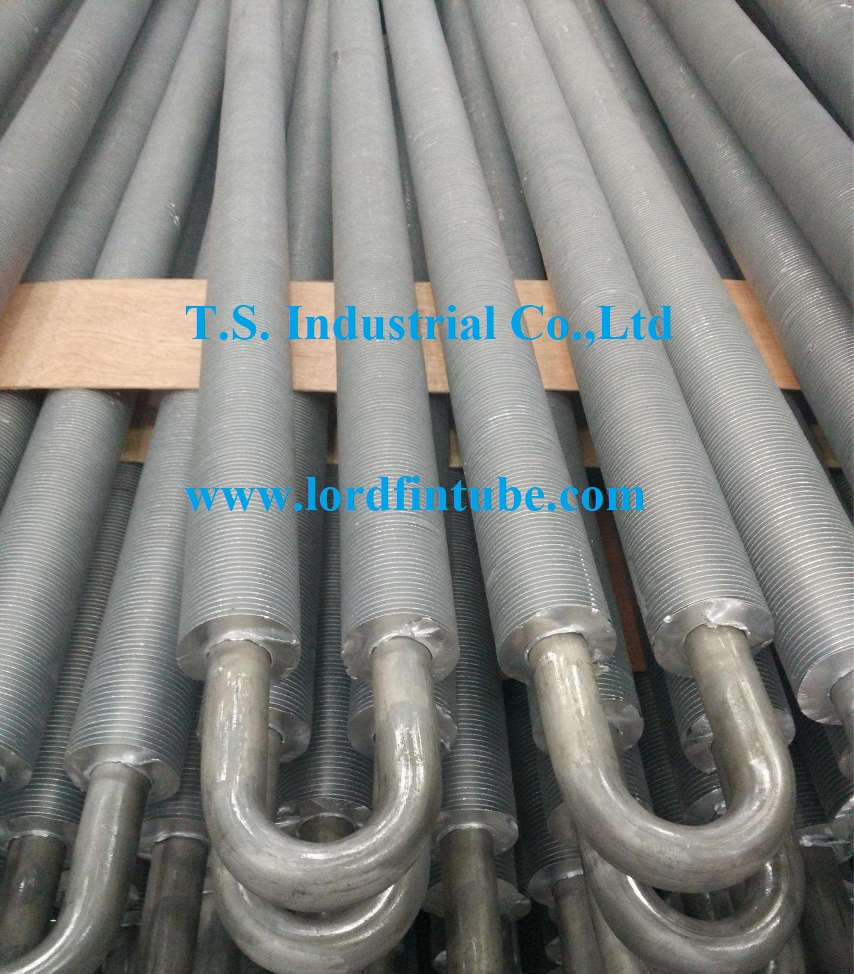Products Description
What is U bend finned tube?
A U-bend finned tube is a type of heat transfer component used in many industrial and commercial applications for efficient heat exchange. It consists of a tube that is bent in a U-shape with fins attached to its outer surface. The fins are typically made of metal, such as aluminum or copper, and are designed to increase the surface area of the tube, thereby enhancing its heat transfer performance.
The U-bend design allows for easy installation and provides flexibility in routing the tube in heat exchanger systems. The fins attached to the tube increase the heat transfer rate by improving the conduction of heat from the tube to the surrounding air or other fluids. This makes U-bend finned tubes particularly suitable for applications where high heat transfer efficiency is required, such as in air conditioning systems, refrigeration units, boilers, and process heaters.
U-bend finned tubes are available in various configurations, including different tube materials, fin types, and fin spacing, to suit specific heat transfer requirements. They are commonly used in industries such as HVAC (heating, ventilation, and air conditioning), power generation, chemical processing, and oil and gas production, where efficient heat exchange is critical for system performance and energy efficiency. U-bend finned tubes are manufactured to industry standards and are often customized to meet the specific needs of each application. Proper selection and sizing of U-bend finned tubes are important considerations for optimizing heat transfer performance and system efficiency. Consulting with a qualified engineer or heat transfer expert is recommended for selecting and designing U-bend finned tubes for a particular application. Overall, U-bend finned tubes are a popular choice for efficient heat transfer in a wide range of industrial and commercial applications. They offer high performance and versatility in a compact design, making them suitable for various heat exchange requirements. Whether its for heating, cooling, or process applications, U-bend finned tubes are widely used to improve heat transfer efficiency and optimize system performance. Contacting a qualified engineer or heat transfer expert can help in selecting the right U-bend finned tubes for a particular application. Overall, U-bend finned tubes are an effective solution for efficient heat exchange in many industrial and commercial settings. They offer high performance, versatility, and compact design, making them suitable for a wide range of heat transfer applications. Proper selection, design, and installation of U-bend finned tubes are essential for optimizing heat transfer performance and system efficiency.
Overall, U-bend finned tubes are widely used and well-suited for many heat exchange applications where high heat transfer efficiency is a priority. Proper design, selection, and installation are important for maximizing their performance and ensuring efficient operation of heat exchange systems. If youre considering U-bend finned tubes for your heat transfer needs, its recommended to consult with a qualified engineer or heat transfer expert to determine the best options for your specific application. They can help you select the right materials, fin types, and configurations to optimize heat transfer performance and system efficiency.
How to produce U bend finned tube?
The typical production process for U-bend finned tubes involves finning the straight tubes first and then bending them into a U-shape. Here is the corrected sequence of steps:
1. Tube Preparation: Start with straight tubes made of the desired material, such as copper or aluminum. The tubes may be seamless or welded, depending on the application requirements.
2. Finning: Fins are attached to the outer surface of the straight tubes. The fins can be made of various materials, such as aluminum, copper, or steel, and can be attached using different methods, including mechanical expansion, brazing, or welding. The fins can be formed in different shapes, such as flat, spiral, or helical, depending on the desired heat transfer performance.
3. Tube Bending: The finned tubes are then bent into a U-shape using specialized bending machines or tools. The bending process should be carefully controlled to ensure accurate bending angles and radii according to the desired U-bend specifications.
4. Heat Treatment: The U-bend finned tubes may undergo a heat treatment process to improve their mechanical properties and ensure proper bonding between the fins and the tubes. Heat treatment may involve processes such as annealing, quenching, or tempering, depending on the material and application requirements.
5. Quality Inspection: The U-bend finned tubes undergo rigorous quality inspection to ensure they meet the required specifications and standards. This may include dimensional inspection, visual inspection, and non-destructive testing (NDT) methods, such as X-ray or ultrasonic testing, to detect any defects or imperfections.
6. Finishing: Once the U-bend finned tubes pass the quality inspection, they may undergo additional finishing processes, such as cleaning, polishing, or coating, to protect the surface and improve their appearance.
7. Packaging and Shipping: Finally, the U-bend finned tubes are packaged according to the specific requirements of the application or customer, and then shipped to the intended destination.
Its important to note that the production process for U-bend finned tubes may vary depending on the manufacturer, materials used, and application requirements. Consulting with a qualified manufacturer or engineer with expertise in heat exchanger components can provide more detailed guidance on the specific production process for U-bend finned tubes based on your requirements. Proper manufacturing processes, quality control, and inspection are critical to ensure the final product meets the desired specifications and performance requirements. Whether its for HVAC systems, refrigeration units, boilers, or other heat exchange applications, producing U-bend finned tubes requires precision and expertise to ensure optimal performance in the intended application.



